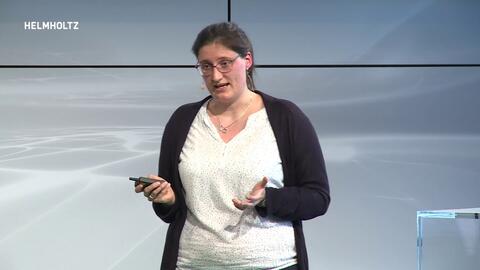Funds speed the path from the lab to the clinic
Whether it’s new therapeutic approaches to inflammatory skin diseases and skin cancer prevention, an inhibitor that can improve cancer therapies, or an innovative technology to thoroughly evaluate the heterogeneity of tumors – basic research findings need to find their way to the clinic as quickly as possible. However, this often requires a bit of development assistance. With the Pre-GoBio program, the Technology Transfer Office at the Max Delbrück Center for Molecular Medicine in the Helmholtz Association (MDC) supports research projects that have the potential to make the leap from the lab to clinical use. This year, three projects have been awarded. A total of 825,000 euros was approved for the duration of the projects.
Of white mice and skin diseases
The MDC scientists led by Professor Michael Bader in the Molecular Biology of Peptide Hormones group actually investigate cardiovascular diseases. They discovered by chance that albino mice that lack a certain enzyme are not actually white, but cream-colored. The enzyme, whose name Bader does not yet want to reveal, has many functions in the body. “We quickly suspected that the strange color of the mice was not a coincidence, but resulted from this missing enzyme,” said Bader. “We assume that the protein also cleaves the α-melanocyte-stimulating hormone (α-MSH), which plays an important role in the pigmentation of skin and hair.”
The Pre-GoBio-funded project aims to prove this hypothesis and also test inhibitors that block the critical enzyme, thereby stimulating skin pigmentation. In fact, a pharmaceutical substance that might be suitable for this purpose already exists. “If we succeed, we could develop a skin tanning cream,” said Bader. What sounds like a pure cosmetic product actually has medical significance: Tanning the skin in this manner could protect people who have already had a melanoma and need to be particularly careful in sunlight. After all, they have an increased risk of falling ill again. Blocking the enzyme could also help with inflammatory skin diseases.
Improving cancer therapies
Chemotherapy and radiation therapy are central pillars in the treatment of cancer. However, resistance to therapy often prevents a cure. Professor Claus Scheidereit, head of the Signal Transduction in Tumor Cells group, is working on a new way to improve the effect of chemotherapy and radiation therapies with his team. “Tumor cells can evade such therapies by activating a signaling pathway that prevents the tumor cells from dying,” the scientist explained. The enzyme IκB kinase is at the heart of this process. It activates the transcription factor NF-κB, which in turn activates cellular processes that enable cancer cells to survive.
We hope that our approach will lead to a new class of drugs that enhance the effectiveness of chemotherapy and radiation therapy.
The connection of the NF-κB signaling pathway to cancer has been known for some time. However, previous attempts to use it for therapeutic purposes have failed. “The IκB kinase/NF-κB signaling module regulates many physiological processes,” said Scheidereit. “Therefore, generally blocking it would lead to colossal side effects.” Scheidereit’s team has now identified two chemical substances that can selectively block the IκB kinase/NF-κB signaling pathway. This only takes place in cells in which double-strand breaks have occurred in the DNA – for example, as a result of chemotherapy or radiation therapy. Within the Pre-GoBio framework, the scientists hope to investigate these substances and their effect in cell cultures and animal experiments before clinical studies can test their efficacy for patients. “We hope that our approach will lead to a new class of drugs that enhance the effectiveness of chemotherapy and radiation therapy,” explained Scheidereit. “On the one hand, our goal is to prevent resistance to therapy, and on the other, to reduce the side effects of the therapies.”
Heterogeneity of tumor cells in 3D
The team led by Professor Nikolaus Rajewsky, head of the Systems Biology of Gene Regulatory Elements group at the MDC’s Berlin Institute for Medical Systems Biology (BIMSB), is also working on tumor cells. The scientists are investigating tumor cell heterogeneity.
Tumor cells are not all the same, but are highly different. Frequently, this makes the exact diagnosis and treatment of cancer more difficult. “If we want to improve both, we need to better understand the heterogeneity of tumors,” said Rajewsky. To achieve this goal, the scientists are using 3D sequencing. This method enables them to determine which genes are transcribed and translated into RNA for each individual cell in a tissue – without losing information about the spatial context.

"Single Cells in Time and Space" - presentation by Christin Sünkel, Rajewsky Lab
As part of the Pre-GoBio grant, the researchers will initially create a 3D atlas of gene expression in the brain of a mouse as proof of concept. They will then start applying the 3D sequencing they have developed to the investigation of salivary gland tumors.
About Pre-GoBio
MDC Pre-GoBio is a program supporting translational projects that have great medical and commercial potential. It helps to move research findings toward specific applications in order to improve their marketability and commercial viability. The overall aim of the program is to accelerate the development of innovative products and technologies that will benefit patients.
Further information
Author: Stefanie Reinberger







